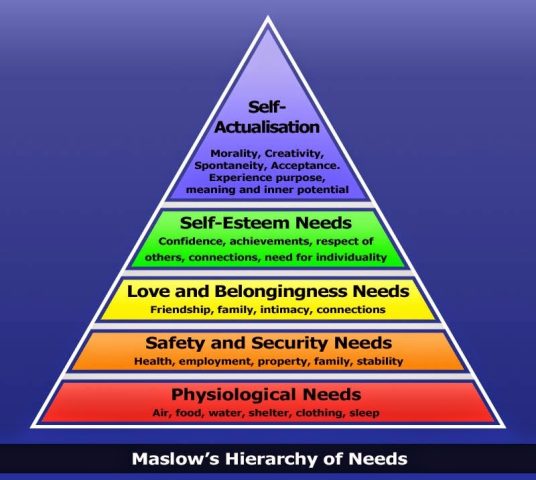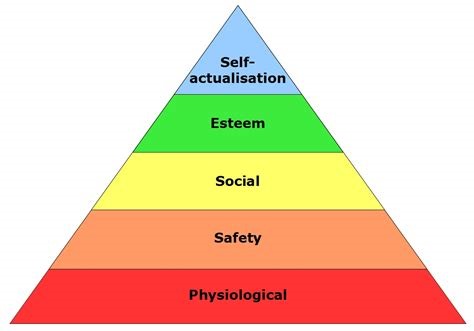March ‘23 Health & Wellbeing Blog! Maslow’s Hierarchy of Needs
Maslow’s Hierarchy of Needs
After a really well delivered brief I was fortunate enough to be a part of, I thought I would share some insight about Maslow’s Hierarchy of Needs. This pyramid is a great metaphorical model that states the five categories of human’s need, and how they can influence an individual’s behaviour.

Maslow’s Hierarchy of Needs is a psychological theory that describes human motivation and the factors that drive human behaviour. The theory was first introduced by Abraham Maslow, an American psychologist, in his 1943 paper “A Theory of Human Motivation.” The hierarchy is typically represented as a pyramid, with the most basic needs at the bottom and the highest needs at the top.
At the base of the pyramid are the physiological needs, which are the most fundamental needs that humans have. These include things like food, water, shelter, and warmth. Without these basic needs being met, it is difficult for a person to focus on anything else.
The second level of the pyramid is safety needs. These include things like physical safety, financial security, and protection from harm. Once a person’s physiological needs are met, they can begin to focus on their safety needs.
The third level is love and belonging needs. This includes the need for social connections, intimacy, and a sense of belonging. People want to feel like they are part of a group or community, and they want to feel loved and accepted by others.
The fourth level is esteem needs. This includes the need for self-esteem, self-respect, and the respect of others. People want to feel good about themselves and feel that they are valued by others.
Finally, at the top of the pyramid, are the self-actualisation needs. This includes the need for personal growth and development, the desire to reach one’s full potential, and the pursuit of meaningful goals and activities.
One of the key insights of Maslow’s Hierarchy of Needs is that people are motivated by different things at different times in their lives. When a person’s basic physiological needs are not met, they will be primarily motivated by a desire to meet those needs. As those needs are met, their motivation will shift to the next level of needs.
Another important insight is that people are not always rational in their behaviour. Sometimes people will act in ways that don’t seem to make sense, but when you look at their behaviour through the lens of Maslow’s Hierarchy of Needs, it can help to explain why they are behaving the way they are.
For example, someone who is constantly seeking approval and validation from others may be doing so because they have not yet met their esteem needs. Or someone who is always chasing after the next big thing may be doing so because they have not yet reached their self-actualisation needs.

Overall, Maslow’s Hierarchy of Needs is a useful tool for understanding human motivation and behaviour. By recognising the different levels of needs that people have, we can better understand why people behave the way they do and design systems and programs that meet people’s needs at each level of the pyramid.
I hope you gained some benefit from this blog and I look forward to engaging with you soon.
Coach Sean
Contact ISL
We are always happy to talk to you about what we do and how we may be able to help.
Contact ISLConnect with ISL
Follow us on social media.






